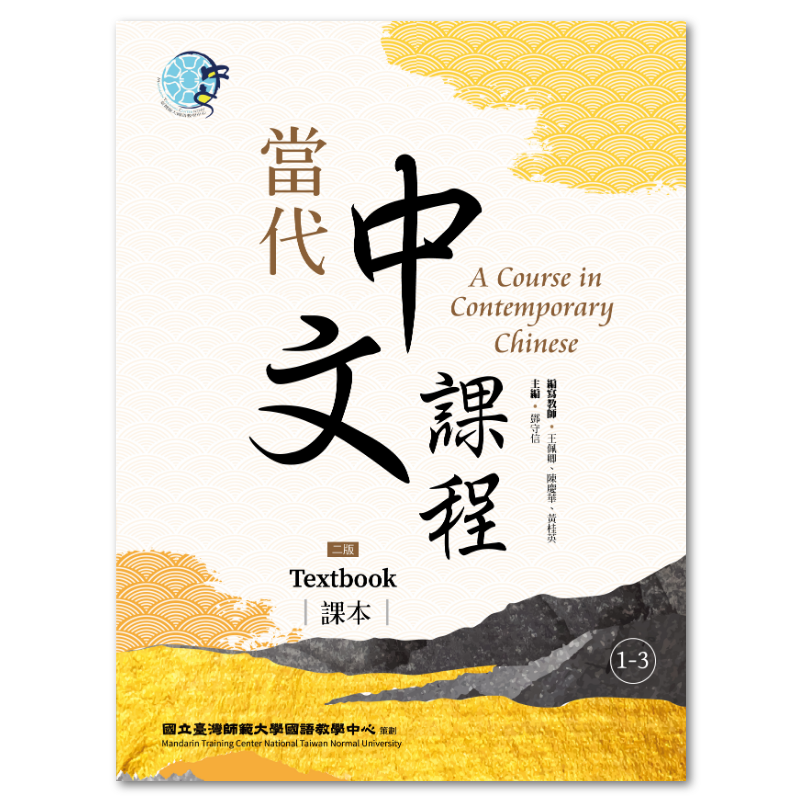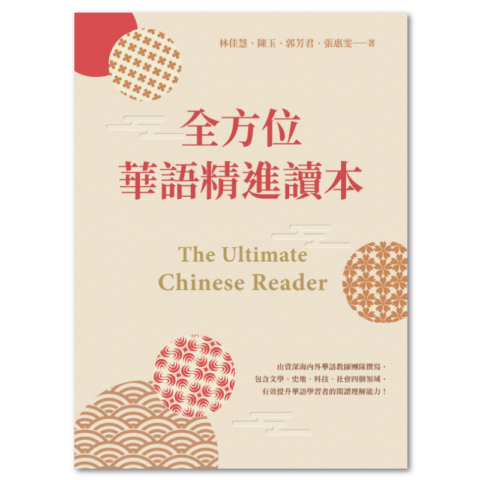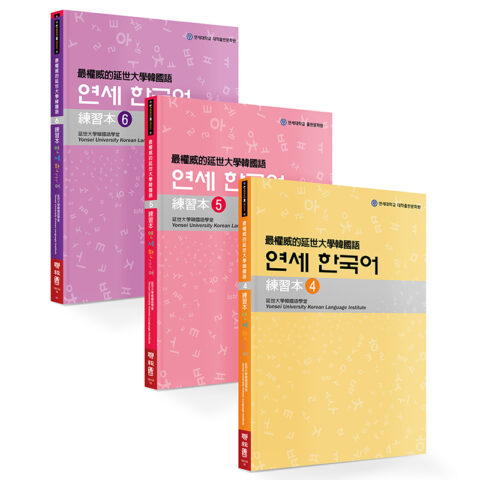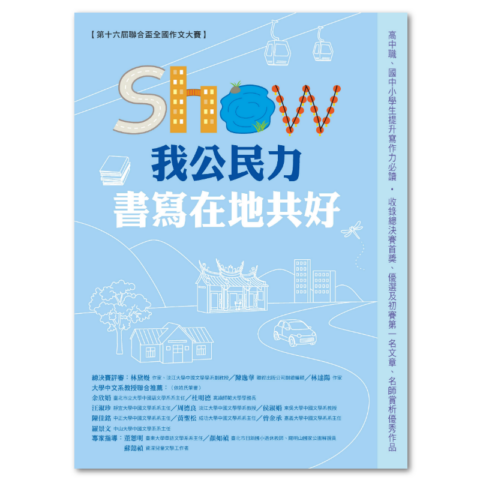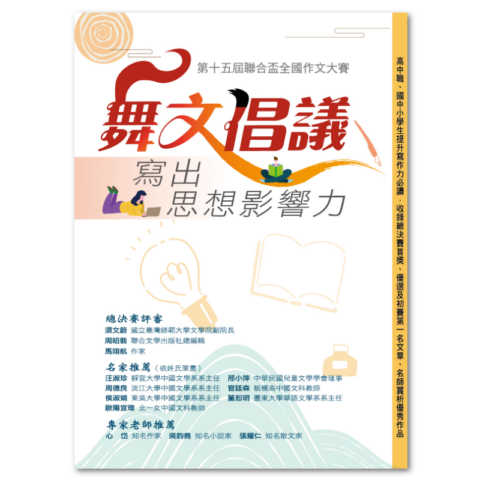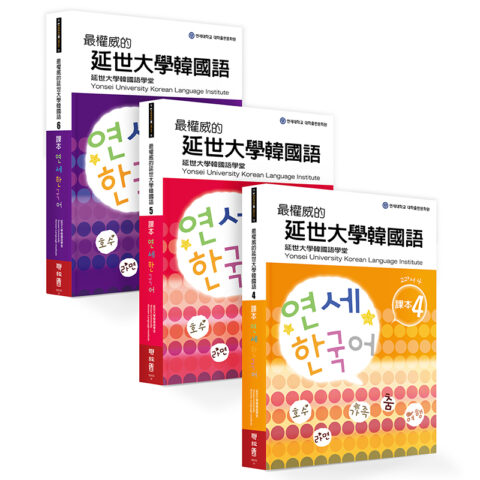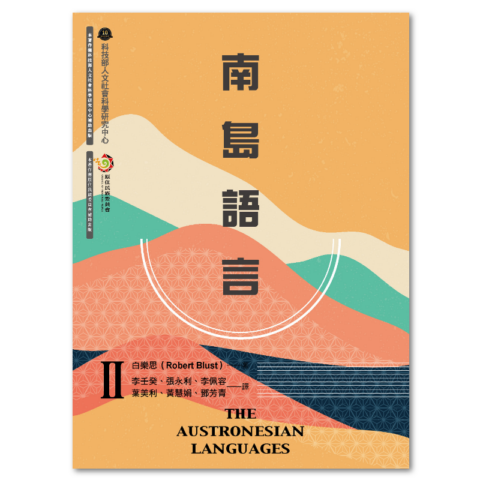當代中文課程 課本1-3(二版)
原書名:A Course in Contemporary Chinese, Textbook 1-3 (2nd Edition)
出版日期:2021-11-04
主編:鄧守信
策劃:國立臺灣師範大學國語教學中心
編寫:王佩卿、陳慶華、黃桂英
印刷:彩色印刷
裝訂:平裝
頁數:172
開數:菊8開,長28×寬21×高1.15cm
EAN:9789570859713
系列:聯經華語 Linking Chinese
尚有庫存
華語教學權威──國立臺灣師範大學國語教學中心編寫開發
集結眾多華語教師及學生使用經驗回饋,全新改版,正是「當代」
【新版特色】
■ 紮實題材:新版保有臺灣師範大學國語教學中心一貫的豐富教學資源及與時俱進的學習主題,再彙集海內外華語教師及使用者第一線回饋,進行內容更新,教學應用更加順利。
■ 輕量分冊:新版第一冊課本以5課為單位,分為1-1、1-2、1-3共3本。可合買也可單購,提供學生更多選擇。
■ 有效學習:整合作業本及漢字簿,作業L1-5+漢字L1-5為1-1,以此類推同樣分為3本,協助學生對應上課進度,追蹤學習成效。
■ AR加持:新版每課皆製作課文對話的AR動畫,下載免費AR軟體即可掃瞄課文圖片,呈現生動的角色與對話畫面。
■ 影音加分:另將各課音檔整合為Youtube播放清單,只要掃描教材封面折口QRcode,即可直接播放全冊音檔。搭配各課動畫,倍增學習樂趣。
【系列規劃】
全系列教材共六冊,為全方位訓練學生華語能力的教材。前三冊以口語訓練為主,後三冊開始進入書面語訓練。
第一冊(新版分3本)著重在實際日常生活對話運用,第二冊開始輔以短文閱讀,第三冊則從長篇對話進入書面語及篇章的訓練,第四冊維持長篇對話與篇章兩種形式,擴展談論話題能力。第五冊選擇具爭議性的主題;第六冊則選材自真實語篇;兩冊均涵蓋社會、科技、經濟、政治、文化、環境等多元主題,拓展學生對不同語體、領域的語言認知與運用。
各冊教材分別包含課本、作業本、教師手冊及漢字練習(第一、二冊)。
【程度規劃】
本系列教材適合來台學習華語學生,並適用於海外高中或大學學習華語的學生。一~六冊的程度規劃相當於 CEFR 的 A1-C1等級或 ACTFL 的 Novice-Superior等級。
【特色】
● 符合現代教學潮流,結合溝通式教學和任務導向學習,培養學生使用華語的能力。
● 每課開始的學習目標和課末的學習自評表,幫助學習者了解自己是否達成學習目標。
● 課文緊貼日常生活真實情況,使學生在自然的語境下學習華語。
● 採用新思維漢語教學詞類架構及語法說明,有效防堵學習者偏誤產生。
● 語法說明包括語法功能、結構、語用、練習四個部分,輔助學習者正確地使用語言。
● 課室活動提供明確的學習目標、活動或任務,透過有趣的活動練習鞏固學習。
● 「文化」單元輔以真實的照片,使學習者能深入瞭解臺灣當地社會文化。
● 提供線上輔助工具,協助教師課堂教學輔助及學習者之課後練習。
【Introduction】
This six-volume series is a comprehensive learning material that focuses on spoken language in the first three volumes and written language in the latter three volumes. Volume One aims to strengthen daily conversation and applications; Volume Two contains short essays as supplementary readings; Volume Three introduces beginning-level written language and discourse, in addition to extended dialogues. Volume Four uses discourse to solidify the learner’s written language and ability in reading authentic materials; Volumes Five and Six are arranged in topics such as society, technology, economics, politics, culture, and environment to help the learner expand their language utilisations in different domains.
Each volume includes a textbook, a student workbook, and a teacher’s manual. In addition, Volume One and Two include practices for characters.
【Level of Students】
A Course in Contemporary Chinese 《當代中文課程》 is suitable for learners of Chinese in Taiwan, as well as for high school or college level Chinese language courses overseas. Volumes One to Six cover levels A1 to B2 in the CEFR, or Novice to Advanced levels in ACTFL Guidelines
【Overview】
● The series adopts communicative language teaching and task-based learning to boost the learner’s Chinese ability.
● Each lesson has learning objectives and self-evaluation to give the learner a clear record of tasks completed.
● Lessons are authentic daily situations to help the learner learn in natural contexts.
● Lexical items and syntactic structures are presented and explained in functional, not structural, perspectives.
● Syntactic, i.e. grammatical, explanation includes functions, structures, pragmatics, and drills to guide the learner to proper usage.
● Classroom activities have specific learning objectives, activities, or tasks to help fortify learning while having fun.
● The “Bits of Chinese Culture” section of the lesson has authentic photographs to give the learner a deeper look at local Taiwanese culture.
● Online access provides supplementary materials for teachers & students.
主編:鄧守信
Shou-hsin Teng, PhD
Professor of Chinese Linguistics
University of Massachusetts, Amherst, Mass, USA (retired)
National Taiwan Normal University, Taipei, Taiwan (retired)
Maa Fa Luang University, Chiang Rai, Thailand
Dept. of Chinese as a Second Language, Chungyuan Christian University, Chungli, Taiwan (current)
策劃:國立臺灣師範大學國語教學中心
國立臺灣師範大學國語教學中心成立於 1956 年,隸屬於國立臺灣師範大學,是臺灣歷史最悠久、規模最完備、教學最有成效的華語文教學機構。學員來自全世界各地,許多漢學界知名學者及政經界名人都曾在此就讀,在國際間享譽盛名。
The Mandarin Training Center (MTC) at NTNU
The Mandarin Training Center (MTC) is a subsidiary of National Taiwan Normal University (NTNU) and was founded in the autumn of 1956 for teaching Chinese as a second language. Currently, the MTC is the largest and the most renowned Chinese language center, with around 1,700 students from more than 70 countries enrolled each academic quarter (three months).
編寫:王佩卿
編寫:陳慶華
國立臺灣師範大學國語教學中心資深華語教師,合著有《當代中文課程》
編寫:黃桂英
前言 Foreword
主編的話 From the Editor’s Desk
系列規畫 About the Series
改版緣起 Reasons for the Revision
AR使用步驟 How to Use AR
漢語介紹 An Introduction to the Chinese Language
各課重點 Highlights of Lessons
詞類表 Parts of speech in Chinese
課堂用語 Classroom Phrases
人物介紹 Introduction to Characters
第十一課 我要租房子
Lesson 11 I Would Like to Rent a Place
第十二課 你計畫在臺灣學多久的中文?
Lesson 12 How Long Will You Be Studying Chinese in Taiwan?
第十三課 生日快樂
Lesson 13 Happy Birthday
第十四課 天氣這麼冷!
Lesson 14 It’s So Cold!
第十五課 我很不舒服
Lesson 15 I Don’t Feel Well
附錄
I. 生詞索引 Vocabulary Index (Chinese-English)
II. 生詞索引 Vocabulary Index (English –Chinese)
III. 簡體字課文參考
主編的話/From the Editor’s Desk
Finally, after more than two years, volume one of our six-volume project is seeing the light of day. The language used in A Course in Contemporary Chinese is up to date, and though there persists a deep ‘generation gap’ between it and my own brand of Chinese, this is as it should be. In addition to myself, our project team has consisted of 18 veteran MTC teachers and the entire staff of the MTC Section of Instructional Materials, plus the MTC Deputy Director.
The field of L2 Chinese in Taiwan seems to have adopted the world-famous ‘one child policy’. The complete set of currently used textbooks was born a generation ago, and until now has been without predecessor. We are happy to fill this vacancy, and with the title ‘number two’, yet we also aspire to have it be number two in name alone. After a generation, we present a slightly disciplined contemporary language as observed in Taiwan, we employ Hanyu Pinyin without having to justify it cautiously and timidly, we are proud to present a brand-new system of Chinese parts of speech that will hopefully eliminate many instances of error, we have devised two kinds of exercises in our series, one basically structural and the other entirely task-based, each serving its own intended function, and finally we have included in each lesson a special aspect of Chinese culture. Moreover, all this is done in full color, the first time ever in the field of L2 Chinese in Taiwan. The settings for our current series is in Taipei, Taiwan, with events taking place near the National Taiwan Normal University. The six volumes progress from basic colloquial to semi-formal and finally to authentic conversations or narratives. The glossary in vocabulary and grammar is in basically semi-literal English, not free translation, as we wish to guide the readers/learners along the Chinese ‘ways of thinking’, but rest assured that no pidgin English has been used.
I am a functional, not structural, linguist, and users of our new textbooks will find our approaches and explanations more down to earth. Both teachers and learners will find that the content resonates with their own experiences and feelings. Rote learning plays but a tiny part of our learning experiences. In a functional frame, the role of the speaker is often seen as prominent. This is natural, as numerous adverbs in Chinese, as they are traditionally referred to, do not in fact modify verb phrases at all. They relate to the speaker.
We, the field of Chinese as a second language, know a lot about how to teach, especially when it comes to Chinese characters. Most L2 Chinese teachers world-wide are ethnically Chinese, and teach characters just as they were taught in childhood. Truth is, we know next to nothing how adult students/learners actually learn characters, and other elements of the Chinese language. While we have nothing new in this series of textbooks that contributes to the teaching of Chinese characters, I tried to tightly integrate teaching and learning through our presentation of vocabulary items and grammatical structures. Underneath such methodologies is my personal conviction, and at times both instructors’ and learners’ patience is requested. I welcome communication with all users of our new textbooks, whether instructors or students/learners.
Shou-hsinTeng
